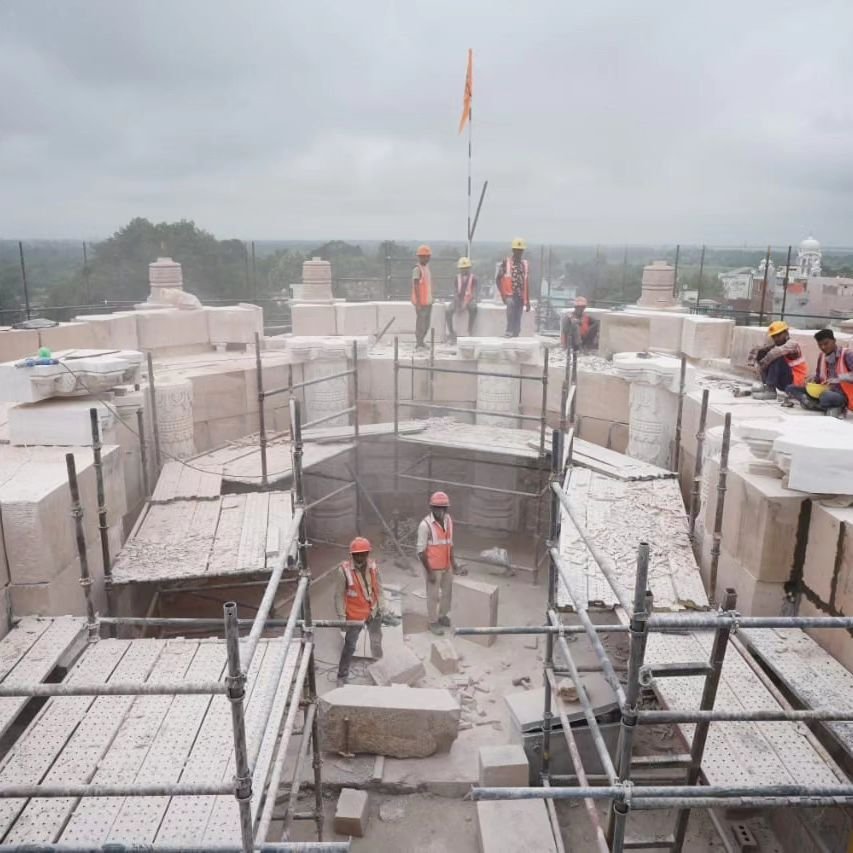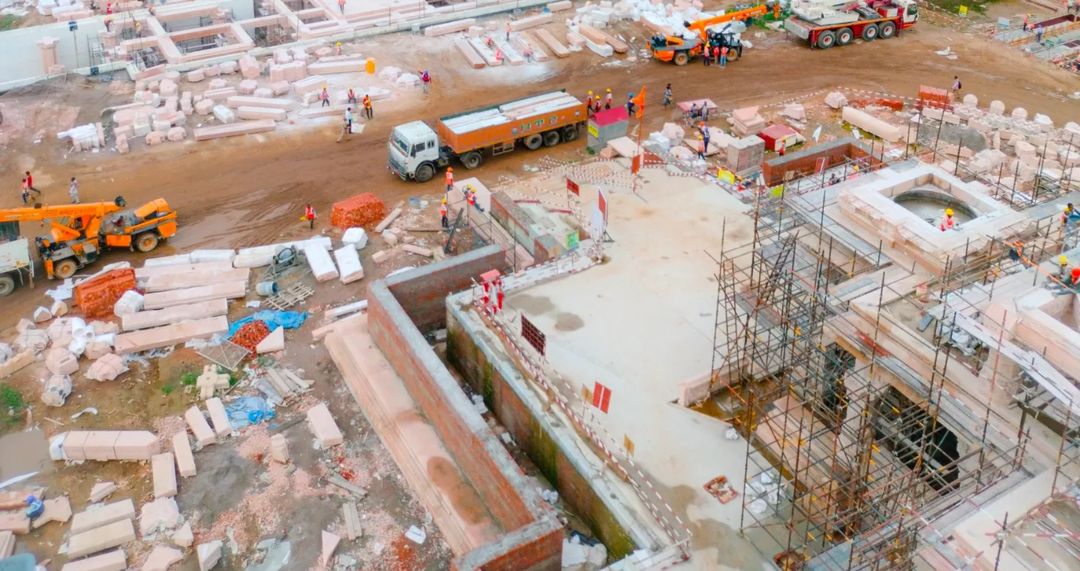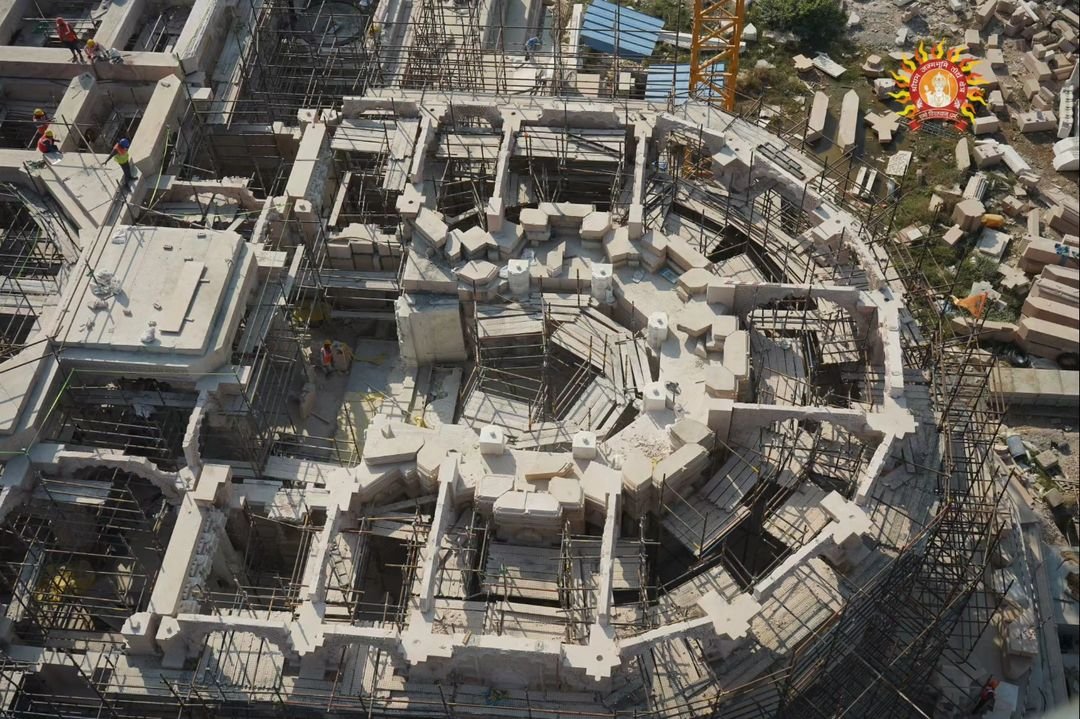Everything you need to know about Ayodhya Ram Mandir


Prime minister Narendra Modi will inaugurate the Ayodhya Ram Temple on January 22, 2024. During the pran-partisha (consecration) ceremony, the idol of Ram Lalla will be installed in the sanctum- sanctorum (garbha-griha) of the temple. Devotees on the other hand will be allowed entry to the grand temple from January 24.
Table of Contents
Ayodhya Ram Mandir: Background
One of the biggest temples to be built in India after Independence, the Ayodhya Ram Temple is touted to be a combination of new-age technological conveniences and age-old Indian traditions.
Between 1528 and 1529, the Babri Masjid was built by the Mughal emperor Babur. However, members of the Hindu community also sought possession of the site, claiming it to be the birthplace of Lord Ram. The site subsequently became a disputed site and a long, legal battle ensued. Ending the title dispute on November 9, 2019, the Supreme Court accepted the 2.77 acres of disputed location as the birthplace of Lord Ram, paving the way for the construction of the Ram Mandir.
Ayodhya Ram Mandir foundation stone-laying ceremony
After the SC verdict, prime minister Narendra Modi performed the Bhumi Poojan ceremony on August 5, 2020, and laid the foundation stone of the temple.
Ayodhya Temple area and capacity
Spanning 54,700 sq ft, the temple area covers nearly 2.7 acres of land. The entire Ram Mandir Complex would be spread over nearly 70 acres and will be equipped to host about a million devotees at any time.
Ayodhya Ram Temple: Agency overseeing construction
The Shri Ram Janmabhoomi Teerth Kshetra Trust is supervising the temple’s construction.
Ayodhya Mandir: Estimated cost and funding
The construction work of the temple is likely to take between Rs 1,400 crore to Rs 1,800 crore. The temple trust is receiving between Rs 60-70 lakh in donations for building the grand temple, officials of the Ram Janmabhoomi Teerth Kshetra Nyas say.
Ayodhya Ram Mandir: Building material
Bansi Paharpur Sandstone
The superstructure of the Ram Mandir will be made of carved Rajasthan Bansi Paharpur stone, the rare pink marble stones, world-renowned for its beauty and strength. It will require a total of 4 lakh sq ft of stone.
The Bansi Paharpur Sandstone is found in the Bayana Tehsil of Bharatpur District in Rajasthan and it is available in hues of pink and red. The centre, in 2021, gave an in-principal approval to convert 398 hectares of protected forest land into revenue land to allow the mining of the pink sandstone in the vicinity of the Band Baretha Wildlife Sanctuary in Bharatpur, reversing the ban on mining put in place in 2016.
The Bansi Pahadpur Sandstone has been used in various grand structures of the country, including the Akshardham Temple, the Parliament Complex and the Lal Quila of Agra. Steel or bricks would not be used in the construction of the Ram Mandir.
Ayodhya Ram Mandir: Builders
While Larsen & Toubro are responsible for building the main structure, Tata Consultancy Engineers Ltd would develop the allied facilities.
Ayodhya Ram Mandir: Interior
Specifications
The upcoming temple is 360 ft long, 235 ft wide and 161 ft high. In height, the temple will three times the height of existing structure n the old city.
Style
The temple is designed by chief architect, Chandrakant Bhai Sompura, whose grandfather, Prabhakarji Sompura, had designed the Somnath Temple, along with his son, Ashish Sompura. The 79-year-old architect was appointed in 1992. Sompura mentioned that the Ram Mandir is being built in the Nagara style, following the principles of Vastu Shastra. The entrance on the east would be built in the Gopuram style, which represents the temples of the south. The walls of the temple would display artworks depicting the life of Lord Ram.
Shape
The sanctorum of the mandir would be octagonal-shaped, while the structure perimeter would be circular.
Floors
The mandir will have five domes and one tower with a height of 161 ft. The 3-floor temple will have a centre – Garbh Griha – built to allow sun rays to fall on the idol of Ram Lalla, the infant embodiment of the Lord. Like the sanctorum, the Griha Mandap would be fully covered, while the Keertan Mandap, the Nritya Mandap, the Rang Mandap and the two Prarthana Mandaps on each side would be open areas.
Ram Lalla idol
There will be two idols of Lord Ram. One will be the actual idol found in 1949 and has been in the tent for decades. The other will be a huge statue which will be visible from a long distance, says Jagdish Afle, project manager of the ram Mandir construction work.
The temple bell
A 2,100-kg bell for the Ram Temple is being brought from Etah, a well-known destination for bell manufacturing in India. The 6-ft tall and 5-ft wide bell would cost Rs 21 lakh.
Doors and window
To build the windows and doors, Teak wood (Sagwan) has been procured from Maharashtra’s Chandrapur. Not an ordinary wood, Teak has a life span of over 100 years. Work on building the grand doors and windows is expected to start between June 26 and 30 after a ceremonial ritual.
Ayodhya Ram Mandir: Lifespan
The grand structure is being built to have a lifespan of over 1,000 years. “Each material, which is being used…each design and drawing that is being used…is being done in IIT Chennai. They are the initiators. That is then tested by L&T and TCE. Finally, we have given the stability test for this agenda of 1,000 years to the Central Research Building Institute. The CRBI has tested the entire load that will come onto the structure through simulations. In short, we are dependent on the best brains of this country. There is just one objective – how to make this temple durable for 1,000 years and unique,” Nripendra Misra, the chairman of the Shri Ram Janmabhoomi Teerth Kshetra Trust’s temple construction committee, said.
Number of pilgrims to Ayodhya Ram Mandir
Over 50,000 people visit the temple every day. This number is expected to increase to 100,000 once the temple is inaugurated.
Ayodhya Ram Mandir: Timeline1528-1529: Mughal emperor Babur builds Babri Masjid 1850s: Start of communal violence over the land 1949: Ram Idol found inside the mosque, intensifying communal tension 1950: Two suits filed in Faizabad civil court seeking permission to worship the idol 1961: UP Sunni Central Wakf Board demands the removal of the idol 1986: District Court opens the site for Hindu worshippers 1992: Babri masjid demolished on December 6 2010: Allahabad HC rules three-way division of disputed area among Sunni Waqf Board, Nirmohi Akhara and Ram Lalla 2011: SC stays Allahabad HC order 2016: Subramanian Swamy files plea in SC, seeks the construction of Ram Temple 2019: SC accepts Ayodhya was the birthplace of Lord Ram, hands over the entire 2.77 acres of disputed land to the trust and orders the government to give 5-acre land to Sunni Waqf Board as an alternate site 2020: PM Modi performs Bhumi Poojan and lays the foundation stone |
How to reach Ayodhya?
Air: You can book flights to the Ayodhya Airport from every major Indian city. The airport is conveniently connected to the city centre through the modes of taxi and auto rickshaws.
Road: Ayodhya is well-connected by road to nearby cities and towns. You can hire a taxi or use public transportation like buses to reach Ayodhya from nearby locations. The airport is located approximately 8-10 km from the city centre.
Train: The nearest major railway station to Ayodhya is the Ayodhya Junction. From there, you can take a taxi or an auto-rickshaw to reach Ayodhya Airport. The distance is around 6-8 km.
Ayodhya Ram Mandir: Impact on real estate
Land rates in and around Ayodhya have risen by up to 10 times in the past decade, property dealers and brokers active in the area inform.
“Land bought for lakhs in the city before the announcement of the temple construction overnight became crore-worthy after the Supreme Court verdict. With big developers showing interest in property here, rates have gone up further, brining the city on a par with state capital Lucknow, to say the least,” says Lal Babu Pandey, an Ayodhya resident who worked only as a part-time property dealer earlier.
The interest in land is now so much that that it has turned into a full-time occupation for me and is enough to support my family, informs Pandey.
To find a land parcel within a radius of 5-10 km of the temple a buyer will have to spend at least Rs 2,000 per square foot while rates might go as high as Rs 18,000 per square foot. Prices for commercial plots start at Rs 4,000 per square foot, and can go up to Rs 20,000 per square foot. In some pockets, the rate for one biswa of land is now over Rs 60 lakh which used to be Rs 5 lakh till 2018.
Latest photos of Ayodhya Ram Mandir






















Views of Ram Mandir Sinh Dwar; carvings on Nritya Mandap




Shri Ram Janmabhoomi Mandir Garbha Gruh Aarati Darshan







FAQs
Who is the owner of the Ram Mandir land?
The Shri Ram Janmabhoomi Tirth Kshetra Trust is the owner of the Ram Mandir land.
Which company will be building the Ram Mandir?
L&T is building the Ram Mandir.
How long will it take to build the Ram Mandir?
The temple is expected to be opened to devotees by January 2024.
Source:- https://housing.com/news






